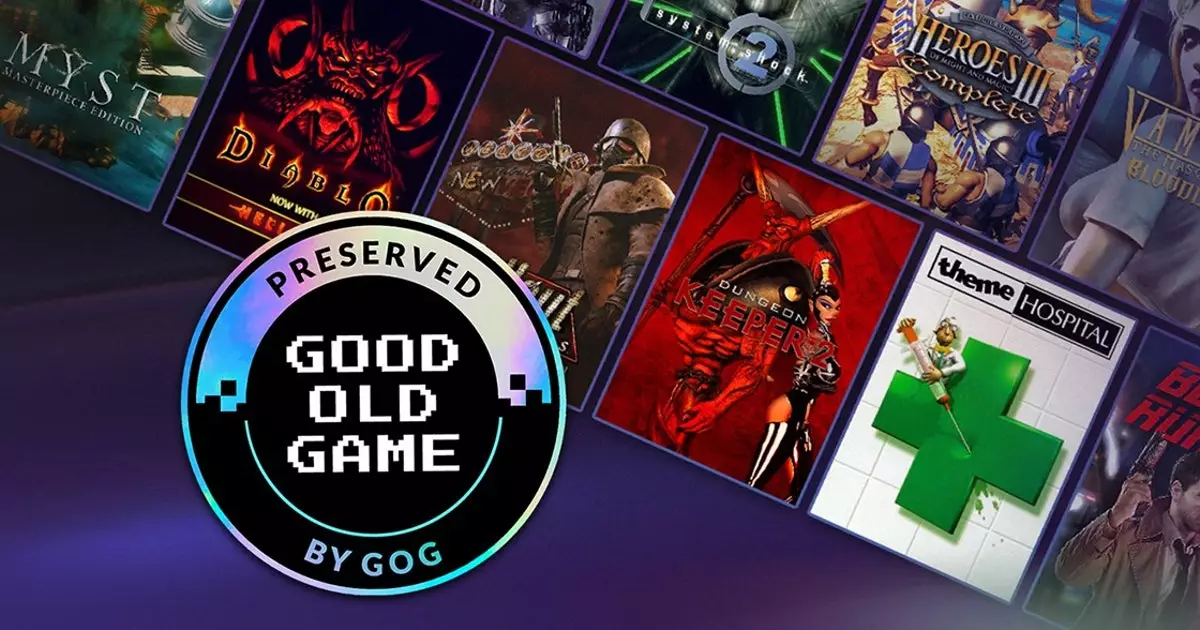In recent years, the digital gaming marketplace has undergone significant transformations, prompting established retailers such as GOG (Good Old Games) to adapt their strategies. Initially celebrated for its dedication to preserving classic video games and operating a DRM-free platform, GOG has become increasingly open to the inclusion of contemporary blockbusters. This shift has raised questions about the retailer’s original commitment to game preservation, leading many to wonder whether they have simply turned into a more rustic variant of Steam.
GOG, once a sanctuary for enthusiasts of vintage games, now walks a tightrope between nostalgia and modern gaming demands. This evolution reflects broader trends within the gaming industry as players have increasingly sought access to current titles alongside beloved classics. Nevertheless, the core question remains: can GOG continue to champion the preservation of video game history while catering to the desire for mainstream appeal?
The GOG Preservation Program: A New Hope for Old Classics
Recognizing the growing concern for legacy titles in modern gaming, GOG has announced the launch of the GOG Preservation Program. This initiative aims not only to resell older titles but to enhance their compatibility with modern hardware, ensuring that they operate seamlessly in today’s gaming environment. As part of this initiative, titles undergoing restoration will be marked with a distinct “Good Old Game” badge, providing consumers with confidence in the product they’re purchasing.
This program is a significant extension of GOG’s prior efforts to revive older games, including high-profile restoration projects for titles like Alpha Protocol and the original Resident Evil trilogy. Taking cues from Valve’s Steam Deck Verified system, GOG’s approach assures players that their newly acquired games will function optimally on contemporary platforms. The process involves fixing bugs, integrating modern video codecs, and ensuring compatibility with the latest operating system upgrades. As tedious as it sounds, these behind-the-scenes efforts are essential to preserving the enjoyment of older gaming experiences.
One of the most enticing aspects of GOG’s preservation effort is the focus on providing the “most complete version available” of each game. This includes not only the main game and its expansions but also downloadable content, manuals, and language options. In a welcome departure from industry norms, these offerings come without digital rights management (DRM), allowing players to install offline and enjoy their games without disruption. As GOG gears up to relaunch over 100 titles with this certification, nostalgic gamers are greeted with a familiar, albeit polished, face from their past.
However, while the promise of enhanced gameplay is alluring, some gamers express skepticism about the lineup of titles that received the Good Old Game status. For example, the allure of modern remasters, such as an updated version of Fallout: New Vegas, has sparked a debate about priorities. Is it justified to expend resources on revamping titles deemed “older” when modern classics remain in need of care? Such discussions illustrate the challenge GOG faces in balancing its preservation goals with market demand.
As ambitious as GOG’s plans may seem, they are not without constraints. The success of the Preservation Program relies heavily on gaining approval from original developers and publishers. Quite often, navigating these legal waters can prove problematic, as rights holders might be hesitant to allow modifications to their games. This could lead to a backlog of titles eligible for revitalization that remain untouched due to licensing challenges. Meanwhile, GOG finds itself under the dual pressure of profit generation while attempting to provide a holistic preservation approach.
Despite these difficulties, GOG’s renewed emphasis on preservation comes at a critical time. As players express their dissatisfaction over publishers discontinuing support for older games—often rendering them unplayable—GOG’s initiative offers a beacon of hope. By prioritizing compatibility and providing proper resources for retro games, GOG could potentially fill a void that traditional publishers have overlooked.
GOG’s Preservation Program represents a promising step toward harmonizing the old with the new in digital gaming. While navigating the intricate challenges of licensing and consumer demand, GOG remains dedicated to not just selling games, but ensuring that cherished experiences are not lost to time. If successful, this initiative could amplify the conversation around game preservation within the industry, pushing other retailers to consider their own roles in maintaining gaming history. The question remains whether GOG can sustain this momentum and genuinely balance the act of preserving the past while adapting to the needs of the present.


Leave a Reply